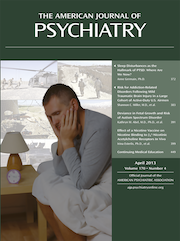Deviance in Fetal Growth and Risk of Autism Spectrum Disorder
Abstract
Objective
Understanding the relationship between fetal growth and autism spectrum disorder (ASD) is likely to advance the search for genetic and nongenetic causes of ASD. The authors explored the associations between fetal growth, gestational age, and ASD with and without comorbid intellectual disability in a Scandinavian study population.
Method
The authors conducted a matched nested case-control study within the Stockholm Youth Cohort that included all children ages 0–17 who resided in Stockholm County from 2001 to 2007 (N=589,114). The authors identified 4,283 children with ASD: 1,755 with intellectual disability and 2,528 without, and they selected 36,588 age- and sex-matched comparison subjects. ASD case subjects were ascertained from unique identifiers assigned to all Swedish residents and linkage with official registers covering all pathways of assessment or care of ASD in Stockholm County. The authors calculated z scores of deviance in fetal growth from a reference curve using records from the national Swedish Medical Birth Registry, which included ultrasound dating of gestational age as well as birth weight. Crude and adjusted odds ratios for ASD, ASD with intellectual disability, and ASD without intellectual disability were the main outcome measures.
Results
ASD risk increased with fetal growth 1.50 standard deviations below and >2.00 standard deviations above the mean for gestational age; the greatest risk was for fetal growth that was less than 2.00 standard deviations below the mean (adjusted odds ratio=1.70; 95% CI=1.44–2.01) or greater than 2.00 standard deviations above the mean (adjusted odds ratio=1.50; 95% CI=1.27–1.77). The same overall pattern was observed for ASD with and without intellectual disabilities. However, poor fetal growth (i.e., growth below the mean) was more strongly associated with ASD with intellectual disabilities than without. Regardless of fetal growth, preterm birth increased ASD risk.
Conclusions
Deviance in fetal growth at either distributional extreme may be a significant antecedent to the development of ASD through genetic and/or nongenetic mechanisms.



